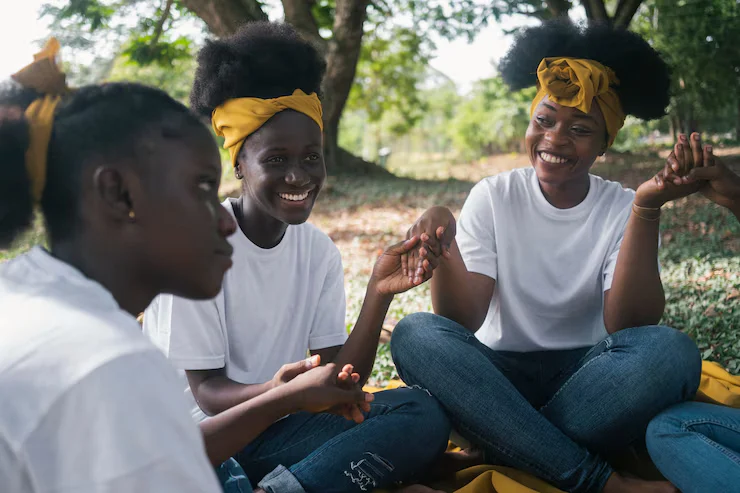Monitoring and Evaluation (M&E) is essential for measuring progress and improving the impact of development programs. However, when working on social issues such as gender equality, adolescent health, education, early marriage, and child protection, data is rarely neutral. Social norms unwritten rules that define acceptable behavior can deeply influence both human behavior and the way information is shared or hidden.
In many African societies, these norms are powerful drivers of community life. Without addressing them, M&E systems risk collecting incomplete, biased, or even harmful data, leading to poor program design and misplaced resources.
In this article, we explore how social norms shape behavior and data collection, and we share practical examples from Malawi, Nigeria, and Ethiopia where integrating social norms into M&E has led to more inclusive, effective programming.

Understanding the Impact of Social Expectations on M&E
Social norms are shared beliefs about what is typical or appropriate in a given community or social group. These norms often dictate:
- Who speaks and who remains silent
- How openly individuals discuss taboo topics (like sexuality or domestic violence)
- What types of behaviors are reported during evaluations
In M&E, failing to account for these norms can result in:
- Social desirability bias: where respondents give “acceptable” rather than truthful answers
- Under-representation: of women, adolescents, or marginalized groups
- Misinterpretation: of community needs and program outcomes
Programs that aim to shift attitudes, behaviors, or power dynamics must make social norms a core part of their M&E framework.

Embedding Social Norms in M&E Across Africa
1. Malawi – Challenging Early Marriage Norms through Adolescent Health Programs
In rural Malawi, a USAID-funded adolescent girls program sought to reduce early marriages and increase access to sexual and reproductive health services. Initial surveys showed low awareness of contraception.
However, through focus group discussions, it was discovered that girls were intentionally withholding information due to fear of community stigma. M&E teams adjusted their tools by:
- Hiring young female enumerators
- Using peer-led story collection sessions
- Adding anonymous response methods
The program’s M&E adaptation revealed that over 60% of girls were aware of contraception but feared backlash, allowing the program to shift messaging and engage community gatekeepers in future interventions.
2. Nigeria – Measuring Gender-Based Violence in Conflict Zones
In Northeast Nigeria, humanitarian actors working with GBV survivors in IDP camps struggled to gather accurate data. Many women refused to report incidents, especially in the presence of male interviewers.
In response, the M&E team applied a “do no harm” protocol with trauma-informed training, privacy-enhancing data collection booths, and same-gender enumerators. These changes led to a 40% increase in disclosure of violence-related cases over three months.
By understanding how cultural and religious norms shaped women’s behavior, the program was able to adapt its M&E tools without compromising safety or data quality.
3. Ethiopia – Tackling Female Genital Mutilation (FGM) through Social Norms Mapping
In Ethiopia’s Afar region, a UNFPA-supported initiative targeted FGM abandonment. However, when survey tools directly asked about FGM, responses were often evasive or defensive.
Instead of traditional questionnaires, the M&E team employed social norms mapping techniques using storytelling, symbolic mapping, and inter generational dialogues. This revealed that the practice persisted due to fear of social exclusion rather than lack of awareness.
This insight informed a shift from awareness campaigns to community-led norm change models, including public declarations and engagement with religious leaders, which were later tracked through qualitative and observational methods.

Reimagining Evaluation Methods for Real Impact
Social norms affect not just behavior but the way people respond to evaluation tools, especially in interventions dealing with:
- Gender roles
- Adolescent sexuality
- Mental health and stigma
- Power dynamics in households and schools
Key strategies for effective social norms-aware M&E include:
- Culturally-sensitive tool design
- Gender-matched data collection teams
- Mixed-method approaches (quantitative + ethnographic insights)
- Continuous community feedback loops
Measure What Truly Matters
Social norms are not just background noise in development programs they are the invisible architecture shaping behavior, decision-making, and truth-telling. In Monitoring and Evaluation, this means that ignoring norms risks collecting numbers that lie, while embracing them opens doors to deeper insight and more transformative results.
As seen in Malawi, Nigeria, and Ethiopia, adapting M&E tools to cultural realities leads to better participation, safer disclosures, and richer data. The future of M&E in Africa must be community-rooted, socially aware, and ethically rigorous.
Let’s stop measuring success in isolation. Let’s measure what truly matters including the norms, beliefs, and power structures that make change possible.
Ready to Transform Your M&E Approach? Let’s Make Every Data Point Count.
Social norms don’t just shape behavior they shape the truth behind your data. Whether you’re evaluating gender programs, youth behavior change, or community health interventions, your M&E tools must reflect the realities of the people you serve.
At Insights and Social, we help organizations across Africa build culturally aware, people-centered M&E systems that go beyond the surface. From tool design to fieldwork, we ensure your evaluations are ethical, inclusive, and insightful.
Let’s talk about how we can support your next project with locally grounded, norms-sensitive evaluation strategies.
Reach out today because better data starts with deeper understanding.





